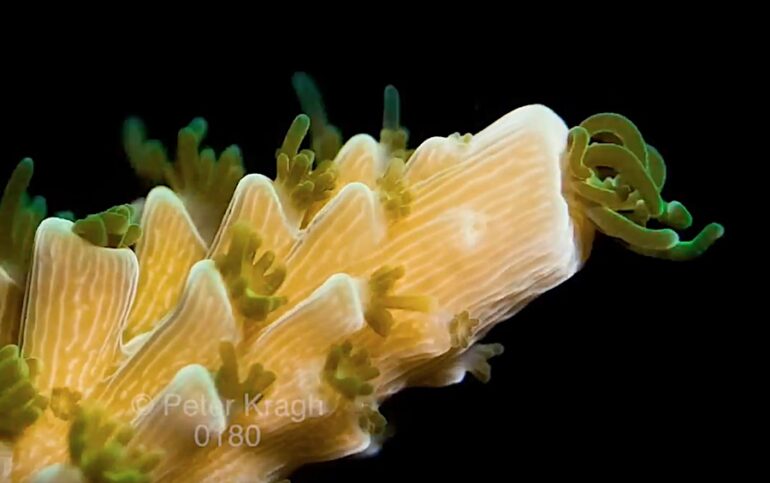Time lapse and macro videos are one of the best tools we have to shine a light on coral ‘behavior’. Since corals don’t move like other animals, and their reactions to the environment are a very different time scale from us, it can be hard to really understand what corals are doing.
But there is a lot we can learn by compressing macro photographs of coral tissue into sequences of time lapse videos. Time shifted videos of Acropora branch tips, showing their growth, coloration and pattern of polyp extension demonstrate a clear daily behavior of polyp extension and reaction to the environment.
The time lapse macro video of the Acropora branches below clearly show the process of aragonite calcium carbonate building up primarily in the fast-growing axial corallite of this specimen. There is also a fascinating sequence showing the regeneration process from a broken branch tip.
Perhaps more enlightening is the fluorescent macro time lapse video showing what happens when reef building SPS corals are exposed to heat stress. We already know that coral lost their brown zooxanthellae first becoming very vivid, and then completely white. What we find very informative about this clip is what happens before the coral bleaches – as the coral begins showing heat stress, you can clearly see the polyps extending less and less, becoming smaller until they are completely gone.
This behavioral response to heat stress is hopefully something you will never see in your home aquarium but it goes to show that polyp size & extension is a very important indicator of coral health, especially in SPS coral. These elucidating videos were produced by Peter Kragh, a wildlife cameraman specializing in marine animals.



